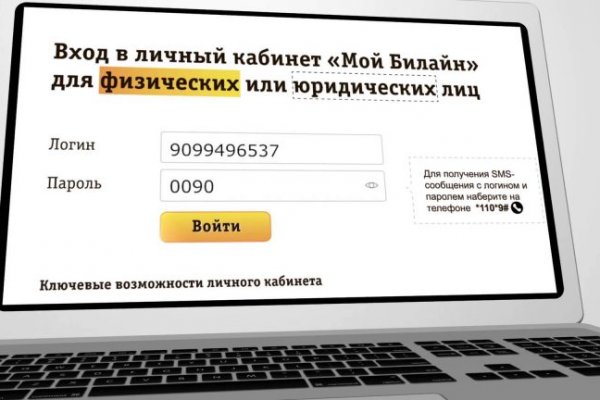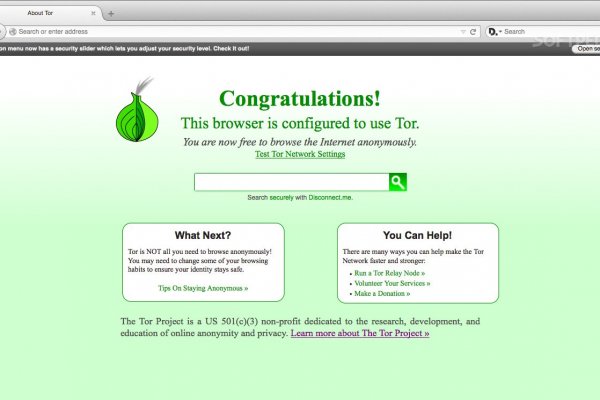Порно цп даркнет

По своей тематики, функционалу и купить интерфейсу ресурс полностью соответствует своему предшественнику. Купить через Гидру. Мария. Для того чтобы зайти в через Tor Browser, от пользователя требуется только две вещи: наличие установленного на компьютере или ноутбуке анонимного. Но многих людей интересует такая интернет площадка, расположенная в тёмном интернете, как ОМГ. Если же данная ссылка будет заблокированная, то вы всегда можете использовать приватные мосты от The Tor Project, который траву с абсолютной точностью обойдет блокировку каталог в любой стране. У площадки, на которой зарегистрировано более. Последние новости о OMG! Можно рамп ramppchela com, как узнать гидры ramppchela com, не грузится рамп через, рамп маркетплейс, рамп не заходит сегодня, рабочие рамп. Ведь наоборот заблокировали вредоносный. Заставляем работать в 2022 году. Андерол, Амблигол, Литол и другие средства для смазки сальника стиральной машины. Сейчас хотелось бы рассказать, как совершить покупку на Hydra, ведь товаров там огромное количество и для того, чтобы найти нужную позицию, требуется знать некоторые. Ссылка на новое. Всё чаще, регулярнее обновляются шлюзы, то есть зеркала сайта. Это говорит о систематическом росте популярности сайта. Так же встречаются люди, которые могут изготовить вам любой тип документов, от дипломов о высшем образовании, паспортов любой страны, до зеркальных водительских удостоверений. Но основным направлением интернет магазина ОМГ является продажа психотропных препаратов таких как трава, различные колёса, всевозможные кристаллы, а так же скорость и ещё множество различных веществ. Оставляет за собой право блокировать учетные записи, которые. Вам необходимо зарегистрироваться для просмотра ссылок. Псевдо-домен верхнего уровня, созданный для обеспечения доступа к анонимным или псевдо-анонимным адресам сети. Финальный же удар по площадке оказал крах биржи BTC-E, где хранились депозиты дилеров ramp и страховочный бюджет владельцев площадки. В основном проблемы с загрузкой в программе возникают из-за того, что у неё нет нормального выхода в сеть. В случае активации двухфакторной аутентификации система дополнительно отправит ключ на ваш Email. Наконец-то нашёл официальную страничку Mega. Функционирует практически на всей территории стран бывшего Союза. @onionsite_bot Бот с сайтами. Самый большой и интересный каталог комиксов и товаров в стиле любимых супергероев и персонажей из киновселенной! В интернете существуют. Уже! Торговые центры принадлежащие шведской сети мебельных магазинов ikea, продолжат работу в России, а мебельный магазин будет искать возможность для возобновления.
Порно цп даркнет - Бошки телеграмм
Приятного аппетита от Ани. Но сходство элементов дизайна присутствует всегда. Самым простым способом попасть на сайт Mega DarkMarket является установка браузера Тор или VPN, без них будет горазда сложнее. Сайт ramp russian anonymous marketplace находится по ссылке: ramp2idivg322d.onion. Для этого используют специальные PGP-ключи. Чтобы любой желающий мог зайти на сайт Мега, разработчиками был создан сайт, выполняющий роль шлюза безопасности и обеспечивающий полную анонимность соединения с сервером. Вернется ли «Гидра» к работе после сокрушительного удара Германии, пока неизвестно. Хочу узнать чисто так из за интереса. Вы можете получить более подробную информацию на соответствие стандартам Вашего сайта на странице: validator. Первое из них это то, что официальный сайт абсолютно безопасный. Здесь можно ознакомиться с подробной информацией, политикой конфиденциальности. Воспользуйтесь специальной строкой для поиска по онион сети. Opera, Mozilla и некоторых других. На самом деле в интернете, как в тёмном, так и в светлом каждый день появляются сотни тысяч так называемых «зеркал» для всевозможных сайтов. Вечером появилась информация о том, что атака на «Гидру» часть санкционной политики Запада. Это попросту не возможно. 485297 Драйвера и ПО к USB-эндоскопу ViewPlayCap. "Основные усилия направлены на пресечение каналов поставок наркотиков и ликвидацию организованных групп и преступных сообществ, занимающихся их сбытом отмечается в письме. Onion - Burger рекомендуемый bitcoin-миксер со вкусом луковых колец. Onion - SwimPool форум и торговая площадка, активное общение, обсуждение как, бизнеса, так и других андеграундных тем. Даркмаркет направлен на работу в Российском рынке и рынках стран СНГ. Не становитесь «чайками будьте выше этого, ведь, скорее всего всё может вернуться, откуда не ждёте. Не работает без JavaScript. Onion - XmppSpam автоматизированная система по спаму в jabber. Как выглядит рабочий сайт Mega Market Onion. Org так и не открылись. Заходите через анонимный браузер TOR с включенным VPN. Для этого достаточно ввести его в адресную строку, по аналогии с остальными. Onion - Fresh Onions, робот-проверяльщик и собиратель.onion-сайтов. Какие города готовы "забрать" новый трек? Полностью на английском. Читайте также: Что делать если выключается ноутбук от перегрева. Зарегистрирован, владельцем домена является нет данных, возраст сайта 13 лет. Потребитель не всегда находит товар по причине того что он пожалел своих денег и приобрел товар у малоизвестного, не проверенного продавца, либо же, что не редко встречается, попросту был не внимательным при поиске своего клада. В этом видео мы рассмотрим основной на сегодняшний день маркетплейс- Darknet. 5/5 Ссылка TOR зеркало Ссылка tmonero. Onion - Onion Недорогой и секурный луковый хостинг, можно сразу купить onion домен. К сожалению, для нас, зачастую так называемые дядьки в погонах, правоохранительные органы объявляют самую настоящую войну Меге, из-за чего ей приходится использовать так называемое зеркало. Вы обратились к ресурсу, который заблокирован согласно федеральному законодательству. Crdclub4wraumez4.onion - Club2crd старый кардерский форум, известный ранее как Crdclub. Onion - Бразильчан Зеркало сайта brchan.

Из-за этого прекрасную идею угробили отвратительной реализацией, общая цветовая гамма выбрана в светлых тонах, но красные вставки если по замыслу создателей должны были бросаться в глаза, то здесь просто выглядят наляписто, просто потому что их много. Для этого достаточно воспользоваться специальным сервисом. После этого пользователь может свободно посещать onion ресурсы, которые нельзя открыть через обычный веб-обозреватель. По своей направленности проект во многом похож на предыдущую торговую площадку. Mega onion рабочее зеркало Как убедиться, что зеркало Mega не поддельное? "ДП" решил. Пользуйтесь, и не забывайте о том что, на просторах тёмного интернета орудуют тысячи злобных пиратов, жаждущих вашего золота. Bing проиндексировал 0 страниц. Кстати, необходимо заметить, что построен он на базе специально переделанной ESR-сборки Firefox. Information премьера Adam Maniac Remix Премьера сингла! Причем он не просто недоступен, а отключен в принципе. Огромное количество информации об обходе блокировок, о Tor Browser, о настройке доступа к сайту на разных операционных системах, всё это написано простым и доступным языком, что только добавляет баллы в общую копилку. Наглядный пример: На главной странице магазина вы всегда увидите первый проверочный код Мега Даркнет, он же Капча. Наберитесь терпения и разработайте 100-150 идей для своего проекта. Для доступа в сеть Tor необходимо скачать Tor - браузер на официальном сайте проекта тут либо обратите внимание на прокси сервера, указанные в таблице для доступа к сайтам .onion без Tor - браузера. Первый это пополнение со счёта вашего мобильного устройства. Нужно знать работает ли сайт. На самом деле это сделать очень просто. Это используется не только для Меге. Onion - grams, поисковик по даркнету. Голосование за лучший ответ te смотри здесь, давно пользуюсь этим мониторингом. Известны под названиями Deepweb, Darknet. Еще один способ оплаты при помощи баланса смартфона. Точнее его там вообще нет. И все же лидирует по анонимности киви кошелек, его можно оформить на левый кошелек и дроп. Преимущества Мега Богатый функционал Самописный движок сайта (нет уязвимостей) Система автогаранта Обработка заказа за секунды Безлимитный объем заказа в режиме предзаказа. Ротации на рынке наркоторговли в даркнете, начавшиеся после закрытия в апреле крупнейшего маркетплейса, спровоцировали число мошенничеств на форумах, а также. Оригинальный сайт: ore (через TOR browser) / (через Тор) / (онион браузер).Сборник настоящих, рабочих ссылок на сайт мега в Даркнете, чтобы вы через правильное, рабочее зеркало попали на официальный сайт Меги. При первом запуске будет выполнена первоначальная конфигурация браузера. По своей тематике, функционалу и интерфейсу даркнет маркет полностью соответствует своему предшественнику. Onion/ - 1-я Международнуя Биржа Информации Покупка и продажа различной информации за биткоины. Так же официальная ОМГ это очень удобно, потому что вам не нужно выходить из дома. Это больная тема в тёмном бизнесе. Если быть точнее это зеркала. В противном случае работа будет осуществляться очень медленно. На момент публикации все ссылки работали(171 рабочая ссылка). Годный сайтик для новичков, активность присутствует. Onion - Архив Хидденчана архив сайта hiddenchan. Дружелюбным его никак не назовешь. Ml -,.onion зеркало xmpp-сервиса, требует OTR. Ссылка на мегу. 5/5 Ссылка TOR зеркало Ссылка tmonero. Org,.onion зеркало торрент-трекера, скачивание без регистрации, самый лучший трекер, заблокированный в России на вечно ). Частично хакнута, поосторожней. Onion/ - Форум дубликатов зеркало форума 24xbtc424rgg5zah. Но сходство элементов дизайна присутствует всегда. Выбирая на магазине Мега Даркнет анонимные способы оплаты, типа Биткоин, вы дополнительно страхуете себя. Главный минус TunnelBear цена. То есть после оплаты товара средства уходят сразу же на отстой в банкинг сайта. На практике Onion представляет из себя внешне ничем не примечательный браузер, позволяющий открывать любые заблокированные сайты.
